After Minneapolis police officer Derek Chauvin murdered George Floyd last year, tens of thousands of people all over the world took to the streets to protest police violence against Black people. And if you look at images from these marches, you will probably start to notice a common color scheme — one involving a lot of red, black, and green.
[Content warning: This episode contains some offensive language]
The flag was invented to unite Black people all over the world living under racial repression. When it first came into existence, the flag posed some bold questions about where Black people owed their loyalty: was it to the nations where their lives were demeaned and threatened? Or to a new nation – one they would build entirely for themselves? For hundreds of thousands of Black people, the red-black-and-green symbolized the answer.
The story of Black Americans creating their own national flag goes back to at least 1900 when a particularly racist song called “Every Race Has a Flag but Not the Coon” became a staple on vaudeville. In the lyrics, the head of a made-up Black social club addresses a meeting, and says he’s just been to a Labor Day parade, where he saw all these different national flags. “Ev’ry nation can brag ‘bout some kind of a flag,” he laments, “Why can’t we get an emblem of our own?” The song goes on to propose a flag for Black people that is crammed with racist stereotypes.
 While shocking to a modern audience, this tune titled was not entirely surprising given the era, made when the US was not even two generations out of slavery. Reconstruction had been undermined. The Supreme Court upheld “separate but equal” laws, and much of Black America lived under Jim Crow or some other anti-Black social order. At the same time, lynching and other terrorist violence surged. Black Americans were being shown that they were not respected or safe, or really even considered fully American. The message came from all directions, including popular music.
While shocking to a modern audience, this tune titled was not entirely surprising given the era, made when the US was not even two generations out of slavery. Reconstruction had been undermined. The Supreme Court upheld “separate but equal” laws, and much of Black America lived under Jim Crow or some other anti-Black social order. At the same time, lynching and other terrorist violence surged. Black Americans were being shown that they were not respected or safe, or really even considered fully American. The message came from all directions, including popular music.
As gross as the song was, the lyrics hinted at something that actually did resonate for Black people – “that actually a flag was something that enabled people to be welded together,” says Colin Grant, author of Negro With A Hat – The Rise and Fall of Marcus Garvey. “That idea was one which many Black people understood.” In the decade or so after the “Every Race Has a Flag” song came out, at least one person took its offensive lyrics as a challenge to design a flag that could represent Black America. A Black professor in Ohio came up with a flag that featured the faces of famous Black leaders. His flag never caught on.

But the idea that Black people needed a flag persisted until it was picked up by Marcus Garvey – a Jamaican-born labor organizer and journalist. Garvey had traveled around Central and South America, witnessing abysmal conditions in mines, tobacco fields, and banana plantations. He tried starting some advocacy newspapers, but without much success. So partly to earn money, and to see how Black people like himself were living in other parts of the British Empire, he decided in 1912 to go much further abroad.
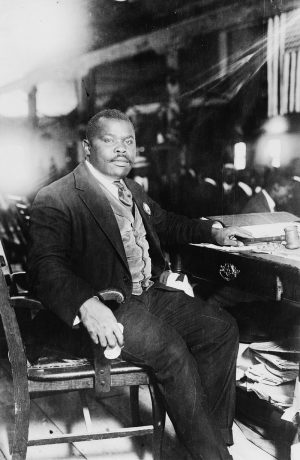 Garvey headed to London, where he landed a job at The African Times and Orient Review – a newspaper that carried stories about Black life throughout the diaspora. The paper’s owner got Garvey a reader’s pass to the British Museum, which had a large library. Between the British Museum library and the bookshelves at the newspaper office, Garvey was reading ideas totally new to him – ideas about the greatness of Africa’s past, and about the possibilities of a global Black nationhood. Garvey began realizing a whole new way of thinking about what it meant to be Black in the anti-black colonial world, particularly the idea that Black people on the African continent and throughout the diaspora share a common identity, a common fate, and a common responsibility to protect and advance “the race.” He had a vision and newfound passion for Pan-Africanism, which “is concerned with the unity and liberation of Africa and people of African heritage,” explains historian Hakim Adi, author of Pan-Africanism – A History. “I like to think of it as a mighty river, with many streams and currents,” he says.
Garvey headed to London, where he landed a job at The African Times and Orient Review – a newspaper that carried stories about Black life throughout the diaspora. The paper’s owner got Garvey a reader’s pass to the British Museum, which had a large library. Between the British Museum library and the bookshelves at the newspaper office, Garvey was reading ideas totally new to him – ideas about the greatness of Africa’s past, and about the possibilities of a global Black nationhood. Garvey began realizing a whole new way of thinking about what it meant to be Black in the anti-black colonial world, particularly the idea that Black people on the African continent and throughout the diaspora share a common identity, a common fate, and a common responsibility to protect and advance “the race.” He had a vision and newfound passion for Pan-Africanism, which “is concerned with the unity and liberation of Africa and people of African heritage,” explains historian Hakim Adi, author of Pan-Africanism – A History. “I like to think of it as a mighty river, with many streams and currents,” he says.
The Evolution of a Pan-African Vision
The term “Pan-African” was relatively new at the time, but it had long and deep roots in history. The Transatlantic Slave Trade had forced together millions of people from across the giant African continent. Adi believes Pan-Africanism started as those people with different languages and cultures began understanding their shared conditions, and then aligned to change them.
By the early 20th century, Black intellectuals had done a lot of thinking and writing about global, Africa-centered Black identity. For his part, Garvey had come to London with the sense that his blackness was something special, but reading about these different ideas helped him think of Africa itself as part of that story. He began to think of the continent in a new, much more positive way that was totally different from the negative stereotypes he’d been taught growing up in Jamaica.

Garvey was also reading about Black self-sufficiency — the call to build a Black world that was economically, politically, and culturally independent from white society. Garvey combined these ideas with his new-found Afrocentrism, and a political philosophy started to emerge.
In June of 1914, Garvey headed back to Jamaica a changed man. In the two years he’d been away, Garvey had found a new mission in life — to create an African empire. Garvey put his Pan-African thinking to work almost as soon as he landed in Jamaica. He formed an organization called the Universal Negro Improvement Association (or: UNIA). Its primary objective was “to establish a universal confraternity among the race,” designed “for the purpose of bettering our industrial, commercial, educational, social and political conditions.”
The start of this new organization was slow. In order to raise money and build a following, Garvey left Jamaica again, and headed to Harlem. When he arrived in 1916, Harlem was going through some major changes of its own. The Black population there had been surging for about a dozen years. Folks were coming from other parts of New York City, from down South, and from the Caribbean, like Garvey had himself.
A Clash of Two Titans
It was the beginning of the so-called “New Negro” era, or the “Negro Renaissance.” In art and politics, folks from throughout the diaspora who’d converged in Harlem argued furiously over what it meant to be Black. Garvey jumped headlong into the debate. He’d get up on Harlem’s famous sidewalk soapboxes and address crowds with his nascent Pan-Africanist ideas.
His bold ideas had their detractors, including the famous W.E.B. Du Bois and his organization: the National Association for the Advancement of Colored People. Du Bois felt that full civil rights were the keys to Black freedom in a country that was hostile to their survival and peace. He believed in America as a viable nation for Black folks. It would take real struggle, but there was a path for Black people to be whole and safe in the land of stars and stripes.
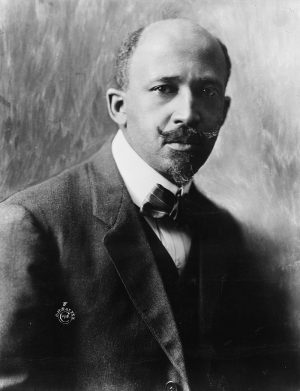
Marcus Garvey saw things totally differently. He came to believe that the fundamental problem for Black people in the West was the West itself. There was no way the US or Great Britain or any other Western power was going to let Black people be truly free. Garvey believed that Black people were, as he put it, a “mighty race”, and that the only way for them to realize their full potential (and to survive the anti-blackness of the West) was to come together and build a separate Black world. The more time Garvey spent in the US, the firmer that position became. In the South, he witnessed first-hand the struggles of rural Black America living under Jim Crow. He’d come from Jamaican society, where class often outweighed race privilege. But in the US, he noticed that dynamic was flipped – which inspired Garvey to center his message on blackness. Colin Grant says Garvey believed “that you only became powerful by uniting together, by having a powerful voice through sheer numbers. And therefore we should cleave together as Black people, and place a primacy on race.”
Then the US entered WWI, and the conflict put the differences between Du Bois and Garvey in sharp relief, and gave Garvey an opportunity to really articulate the Pan-Africanist vision that he had been developing since his days at the British Museum. As President Woodrow Wilson declared that “the world must be made safe for democracy,” Garvey and many other Black leaders asked: what about liberty and safety for Black people in the US? Indeed, as the US headed into the war, racial violence was exploding in American cities and towns, with some of the worst in East St. Louis. DuBois thought the war was an opportunity for interracial cooperation and for Black people to prove once and for all their commitment to American ideals. Garvey argued that Black people should not go fight and die in Europe for freedom and respect they don’t enjoy in their own country. He also predicted that once the war was over, Black veterans would return to a nation ungrateful for their service and just as lethal to their survival. Sure enough, those who did enlist came back to even more racism, including a nationwide wave of anti-black violence known as the Red Summer of 1919. If the question was to whom do Black people owe their loyalty, Garvey’s answer was clear: Black people owe their loyalty first to other Black people – in Africa and the diaspora. And at the heart of this was Africa itself, the place that Garvey saw as the birthright of all Black people.
The Red, the Black and the Green

That Garvey had foreseen the post-war racial violence in America gave his movement traction among Black people. “I think that made him seem, in the eyes of many Black people, a kind of prophet, a seer, someone who could see into the future,” says Colin Grant. “But also someone who was fearless. I mean, he was fearless. And that was very empowering. People wanted to align themselves with him. They saw that he was a winner.” Garvey used that momentum to expand the UNIA, and he continued to spread his message of Black unity and self-sufficiency. It was in this moment that Garvey designed his powerful symbol of Black nationhood: a flag with three horizontal bars (red above black above green). According to the UNIA, the red stands for the blood spilled in the fight to protect and defend Africa; green represents the continent itself – its lushness, and the motherland Garveyites saw as their birthright; and black stands for the people of the continent and the diaspora.
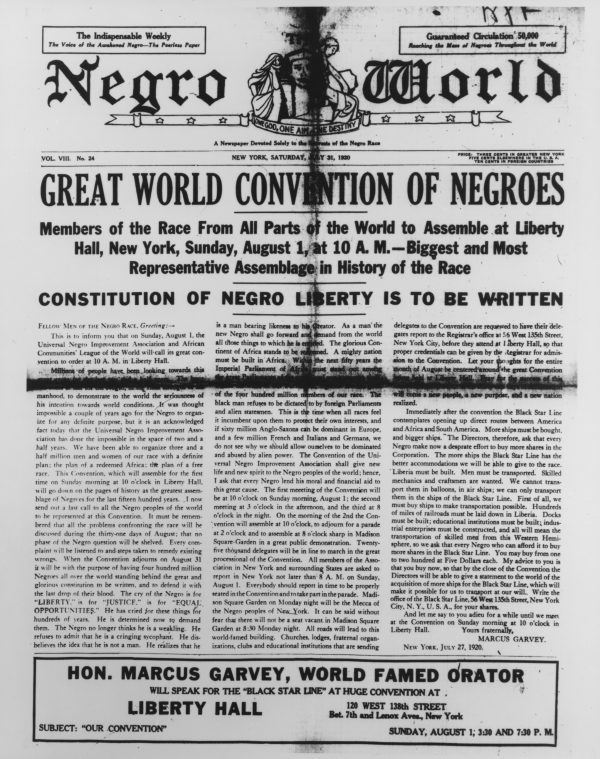 Garvey introduced the Pan-African banner in 1918, and it quickly became the symbol of his rapidly growing international movement. That success came partly from the sheer potency of Garvey’s message, which he spread throughout the Americas during his exhausting speaking tours. The UNIA’s newspaper The Negro World also circulated Garveyism internationally.
Garvey introduced the Pan-African banner in 1918, and it quickly became the symbol of his rapidly growing international movement. That success came partly from the sheer potency of Garvey’s message, which he spread throughout the Americas during his exhausting speaking tours. The UNIA’s newspaper The Negro World also circulated Garveyism internationally.
Garvey’s single biggest recruiting tool was probably the UNIA’s commercial and passenger steamships called The Black Star Line.

Garvey wanted a fleet that would sail between ports throughout the Americas and Africa. The Black Star Line would be one hundred percent Black-owned and operated. In a world where public transportation was often segregated and Black people were routinely limited to the lowest classes of travel, the Black Star Line promised comfort, respect, safety, and speed to its black passengers. The Black Star Line first set sail in 1919 from Harlem. Although it never became as big as Garvey had envisioned, those ships inspired pride and hope in Black people around the world. Every vessel in this fleet hoisted the red-black-and-green on their masts.

UNIA members also played a major role in making the red-black-and-green a symbol recognized throughout the Black diaspora. Two million people around the world had joined UNIA by the late 1910s, and many proudly flew the Pan-African banner – at their homes and business, at UNIA meeting halls, anywhere they could. The UNIA officially declared red, black, and green “the colors of the Negro race” at its 1920 convention, which lasted a month and had an estimated 25,000 participants from around the world filling Madison Square Garden.

Marcus Garvey’s Black nationalist rhetoric, as inspiring as it was, also drew attacks from multiple sides. Federal investigators had been pursuing Garvey since his first years in the US. Several Black American leaders also had issues with his politics and business dealings, and campaigned successfully to get Garvey imprisoned for mail fraud. He served nearly three years, and was deported from the US in 1927. In the years that followed, the UNIA shrank rapidly. Finally, in 1940, Marcus Garvey passed away at age 52 after returning to London.
In the decades after Garvey’s death, several African countries incorporated the Pan-African colors into their own national flags as they gained independence.
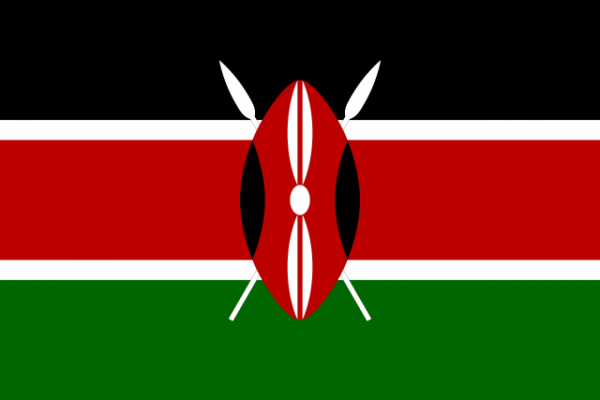
In the US, the red, black and green colors were prominent during the Black Power movement and the Black Consciousness renaissance of the 1960s and 70s. Starting in the late 1980s, the tricolors became a big part of hip hop fashion.
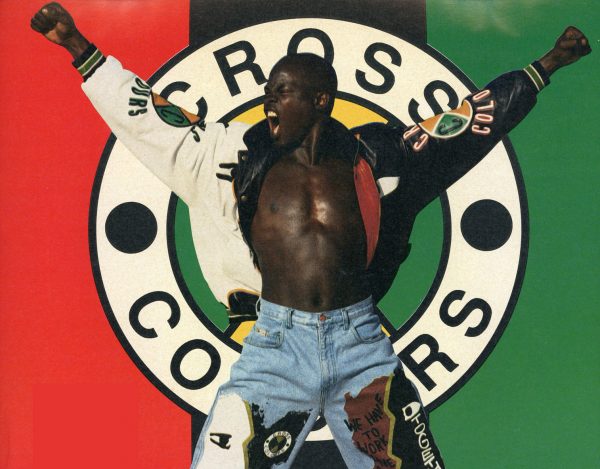
“Show me the race or the nation without a flag,” Garvey once wrote,“ and I will show you a race of people without any pride.” And while Garvey’s legacy is much broader than any one artifact, the Pan-African flag and its colors remain powerful symbols around the world.
Coda: The Juneteenth Flag
Flag Day (June 14th) may be over, but there’s another big day coming up later this week that involves its own flag — Juneteenth, which is a portmanteau of June and 19th. Juneteenth has other names, too, including Freedom Day or Liberation Day. But by whatever title, the day is really important — it commemorates the emancipation of slaves in the United States. It has been celebrated in many places for over a century, but some activists want to see it become a national holiday — and as part of this push for recognition, its advocates created a flag.
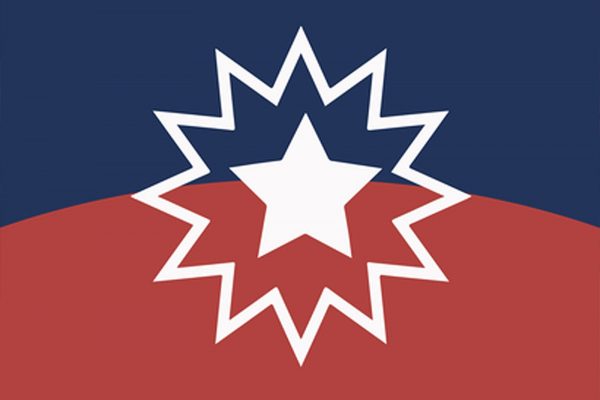
Like the American flag, the Juneteenth flag incorporates red, white and blue, but its design and symbolism are quite different. The flag features a central white star, referencing the Lone Star State where the last of the country’s enslaved population finally learned of their freedom in 1865. Around that is another multi-pointed white star outline, symbolizing other states of the union. These stars are set against a red and blue background. Below, the red arches up to form a symbolic “new horizon” where it meets the blue above. And of course, the color scheme overall serves as a reminder that enslaved people were and are Americans. Broadly, the flag is a symbol for supporters to rally around as they lobby for broader recognition of Juneteenth.
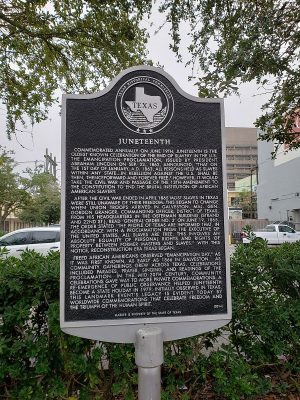
One of the curious things about the flag is the central “lone star” relating to Texas. After all, emancipation wasn’t limited to that one state. But that reference is actually critical to the flag’s history, because June 19th is a very specific (and perhaps surprising) choice for a day to remember this historic shift. Some memorial holidays are picked because something official happened on that day, like the birth of Martin Luther King Jr. or the declaration of Independence. Juneteenth, though, is about a practical outcome: the day in which formerly enslaved people in Texas finally learned of their emancipation. In a way, it’s a more accurate day to celebrate, because it reflects the actual liberation of people who were only theoretically freed by official decree. It was, in short, the day that those people actually got their freedom. Meanwhile, Juneteenth is still not a national holiday, but it may get there soon, in part with the help of its flag, which like any good flag has become a rallying symbol for this day or remembrance.



Comments (1)
Share
The article states that several African nations adopted flags with red, black and green after independence, but I was surprised there was no mention that within Africa the colors most associated with Pan-Africanism are red, yellow and green. The reason is that these were the colors of the traditional Ethiopian flag (it still features those three stripes). Ethiopia was the only African country never colonized because it defeated an Italian army at the Battle of Adwa in 1896 to maintain its independence. This was inspirational for newly independent nations after WWII and today African countries with red, yellow and green flags far outnumber those with red, black and green (and most African flags with black in them also feature yellow).